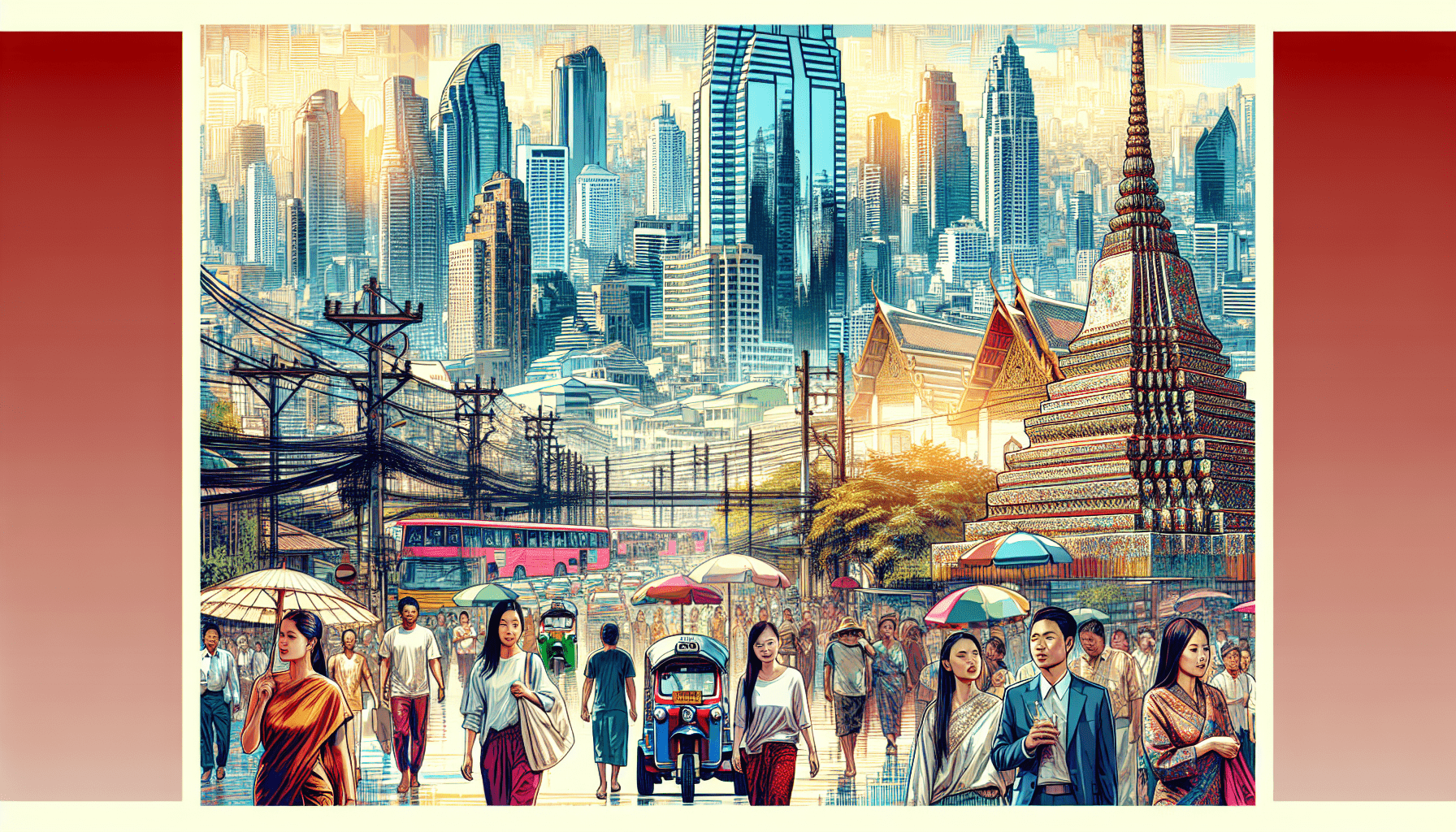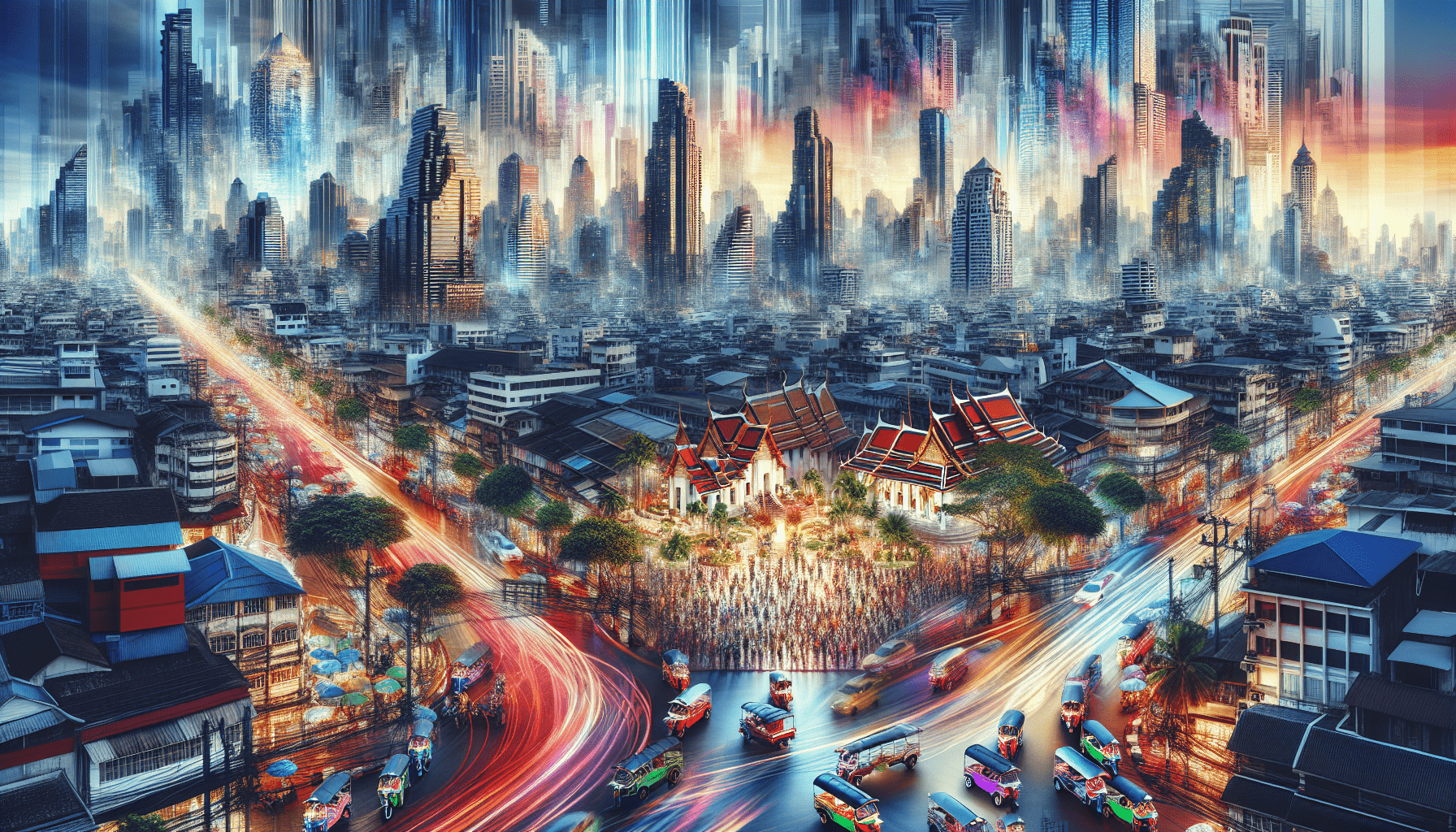Did you know that Bangkok, the vibrant capital city of Thailand, boasts a population that is absolutely staggering? With its bustling streets, modern skyscrapers, and rich cultural heritage, Bangkok is home to an estimated 10.5 million people as of 2021. This sprawling metropolis is renowned for its vibrant markets, mouthwatering street food, and bustling nightlife. Whether you’re exploring the historic temples or getting lost in the labyrinthine alleys of the city, Bangkok never fails to captivate with its dynamic energy and diverse population. So, if you’re ever curious about the population of this incredible city, you’ll be amazed by the sheer number of people that call Bangkok home.
Introduction
Bangkok, the capital city of Thailand, is one of the most vibrant and bustling cities in the world. Located in the central part of the country, Bangkok serves as both an economic and cultural hub. With a population that continues to grow rapidly, understanding the dynamics of Bangkok’s demographic landscape is of vital importance. Accurate and up-to-date population data enables policymakers, urban planners, and researchers to make informed decisions and develop strategies that cater to the needs of its inhabitants.
Current Population
As of the latest available data, Bangkok’s population stands at approximately 8.3 million people. This makes it the most populous city in Thailand and one of the largest cities in Southeast Asia. The city’s diverse and cosmopolitan population contributes to its vibrancy and multicultural atmosphere. In order to gather precise population figures, the government carries out regular census exercises to track the city’s demographic trends.
Population Growth
Over the years, Bangkok has experienced significant population growth. In the early 20th century, its population was only around 100,000, but as the city expanded and developed, more people flocked to Bangkok in search of economic opportunities and a better quality of life. Today, the city’s population grows at an average rate of 1.5 percent per year. Several factors have contributed to this growth, including rural-urban migration, natural population increase, and international immigration.

Population Density
Population density refers to the number of people living in a particular area relative to its size. Bangkok, with its massive population, has a high population density compared to many other cities around the world. It is estimated that the population density of Bangkok is around 5,300 people per square kilometer. This density places significant demands on the city’s infrastructure, resources, and services, which pose both opportunities and challenges for urban development.
Demographics
Examining the demographic composition of Bangkok reveals interesting insights into its population. The age distribution in the city is quite diverse, with a significant proportion of the population falling within the working-age bracket. Gender distribution is relatively balanced, with slightly more females than males in the city. Bangkok is also known for its ethnic and religious diversity, with people from various backgrounds coexisting harmoniously.

Migration
Migration is a key factor in shaping Bangkok’s population. Internal migration, from rural areas to the city, has been a significant driver of population growth. People seeking better job prospects, education, and healthcare facilities often move from rural regions to Bangkok. Additionally, the city is a popular destination for international migrants, attracting people from neighboring countries and beyond.
Urbanization
The process of urbanization has played a vital role in shaping the population dynamics of Bangkok. The expansion of urban areas within the city has facilitated the concentration of people and resources, leading to increased economic activity and better access to amenities. Urbanization has also resulted in the growth of informal settlements, known as slums, highlighting the challenges associated with accommodating a growing population.
Infrastructure and Services
Providing adequate infrastructure and services to meet the needs of Bangkok’s large population remains an ongoing challenge. The city’s transportation system, including roads and public transit, constantly faces congestion issues due to the sheer number of residents. Ensuring access to clean water, electricity, and sanitation in such a densely populated city requires careful planning and innovative solutions.
Impacts and Consequences
The high population density in Bangkok has both positive and negative impacts. On one hand, it fosters a vibrant economy and cultural scene, with a thriving workforce and a diverse range of experiences. On the other hand, the strain on resources and the environment can lead to issues such as pollution and increased carbon emissions. Socially, the concentration of people can result in overcrowding and limited access to affordable housing.
Population Management
The government of Thailand, recognizing the importance of managing and addressing population issues, has implemented various policies and initiatives. These efforts aim to promote sustainable development, enhance infrastructure, and ensure the equitable distribution of resources. The government also recognizes the need to strike a balance between urban development and preserving the cultural heritage and natural environment of Bangkok.
In conclusion, the population of Bangkok continues to grow rapidly, making it a dynamic and ever-evolving city. Accurate population data, along with an understanding of the demographic and migration patterns, plays a crucial role in formulating effective policies and strategies that meet the needs of the city’s inhabitants. As Bangkok’s population density increases, it is essential for the government and stakeholders to prioritize sustainable development and address the challenges that come with managing a large and diverse population.